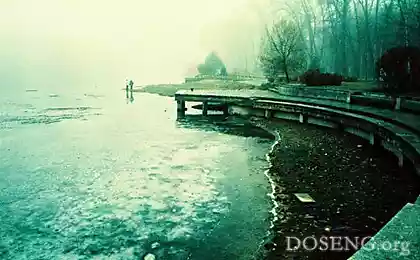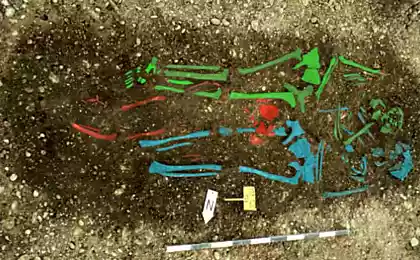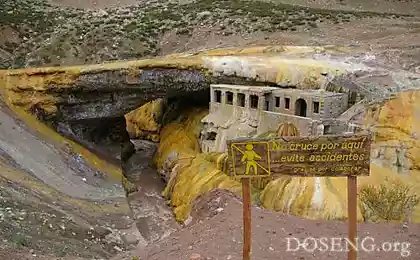554
The probability of human extinction was estimated at 0, 1% per year
For the average person likely to die in a global catastrophe is several times higher than in
accident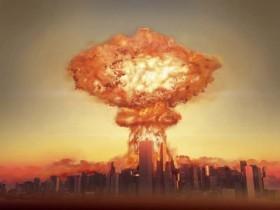
nuclear war. Changing of the climate. Pandemics deadly viruses. This is the most likely threats to global human civilization. On such subjects relieve disaster movies, action and horror movies, but unlike a zombie or sea monsters, this is not fiction, but a real threat to our mind - something that should be taken into account in the preparation of long-term plans
. And if you believe the latest analytical report of the British organization Global Challenges Foundation, these threats are much more likely than we think.
In its latest report the organization to assess the probability of extinction of mankind perish at five times higher than that of a car accident. With this assessment, and agree to other independent analysts. For example, the report Stern Review, drawn up at the request of the British government, the risk of global extinction is estimated at 0, 1% per year. This is a very high figure.
If we compare this figure with the chance to die in a car accident, it turns out that we are afraid of car crashes in vain. For example, in the United States for the year 9395 and avtokastrofah killed people. It turns out that over a hundred years of life the likelihood of the average American to die in an accident is less than 1%.
Meanwhile Global Challenges Foundation estimates the chances of survival of mankind in the next century, only 90, 5% - almost like a Russian roulette (where 5 of 6 in the classical version). That is the threat of a global catastrophe is 9, 5%. This is about 10 times greater than the chance to die in an accident.

Some experts believe that the assessment of the likelihood of mass extinction 9, 5% or 10% seems low, because not evaluated all possible threats. It is not clear how to assess the risks supervolcano eruption or falling into the earth of a large asteroid, causing global climate change in the same way as in the case of a nuclear winter. And how many more events that we simply do not know, as long as they do not come?
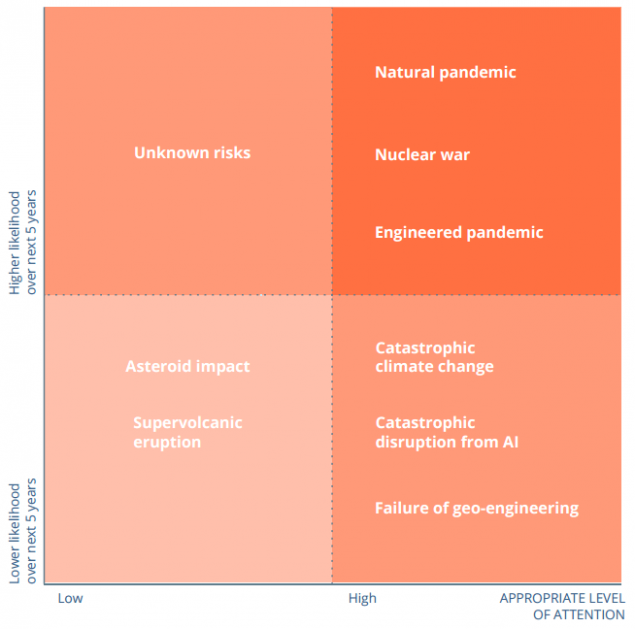
"We do not expect that any of these events will happen in any of the 10-year intervals. They can occur, but probably will not happen, - said the director of Global Challenges Foundation Farquhar Sebastian (Sebastian Farquhar). He cites the example of the airbags and seat belts tv car. They must be in working condition, while the probability of an accident is very low. Similarly, we must take into account the risks and prepare for mass extinction of mankind.
The most dangerous threat is considered to be the threat of nuclear war. In history there have been several cases where world leaders were one step away from having to run to the enemy ballistic missiles with nuclear warheads, which would cause the inevitable retaliation.

Climate change has unpredictable consequences. Some serious scientists believe that further heating of the atmosphere with increasing levels of greenhouse gases will generate a perfect storm continental scale until the end of the century. Even the most optimistic estimates look scary. The UN estimates that the risk of increasing the average temperature at 6-10 ° C is more than 3%, even if humanity is rapidly and dramatically reduce the amount of carbon dioxide emissions. Well, if you count on a realistic scenario, this probability increases to 10%.
The third-probability threat - global pandemic. Over the past two millennia, there were two significant scale plague pandemic: in 1340-ies from the Black Death killed more than 10% of humanity, and the Plague of Justinian 540-542 years wiped out 13-17% of the world population
. Report Global Challenges Foundation examines the risks of extinction from other threats: pandemic genetically modified virus, geoengineering, hostile Artificial Intelligence. Unlike nuclear war and global warming, they are evaluated as "imaginary threat," although the authors of the report warn that many of today's risks were too hard to imagine a few decades ago, and they were evaluated as the imaginary threat.
What you need to take mankind to increase the probability of survival? Experts believe that for each threat have specific measures, such as reduction of carbon dioxide emissions and reduction of nuclear weapons. But on a global scale it is very handy to a sharp increase in food production. If you invent this technology, the rich food supplies would greatly increase the chances of survival in a nuclear winter or global catastrophe like a supervolcano eruption or asteroid hit.
In addition, it would be useful to establish in the world a kind of committee representing the interests of future generations.
The report drawn up by experts from the Center of effective altruism (London) and the Institute for the future of humanity at the University of Oxford, he published in the public domain.
Https://www.slideshare.net/slideshow/embed_code/61594585Как much do you think you left to live? 0-10 years old 11-20 years old 21-40 years old 41-70 years 71-110 years, I hope for a miracle Voted 342 people. Abstain 77 people. Only registered users can participate in the survey. Come in, please.
Source: geektimes.ru/post/275216/
accident

nuclear war. Changing of the climate. Pandemics deadly viruses. This is the most likely threats to global human civilization. On such subjects relieve disaster movies, action and horror movies, but unlike a zombie or sea monsters, this is not fiction, but a real threat to our mind - something that should be taken into account in the preparation of long-term plans
. And if you believe the latest analytical report of the British organization Global Challenges Foundation, these threats are much more likely than we think.
In its latest report the organization to assess the probability of extinction of mankind perish at five times higher than that of a car accident. With this assessment, and agree to other independent analysts. For example, the report Stern Review, drawn up at the request of the British government, the risk of global extinction is estimated at 0, 1% per year. This is a very high figure.
If we compare this figure with the chance to die in a car accident, it turns out that we are afraid of car crashes in vain. For example, in the United States for the year 9395 and avtokastrofah killed people. It turns out that over a hundred years of life the likelihood of the average American to die in an accident is less than 1%.
Meanwhile Global Challenges Foundation estimates the chances of survival of mankind in the next century, only 90, 5% - almost like a Russian roulette (where 5 of 6 in the classical version). That is the threat of a global catastrophe is 9, 5%. This is about 10 times greater than the chance to die in an accident.

Some experts believe that the assessment of the likelihood of mass extinction 9, 5% or 10% seems low, because not evaluated all possible threats. It is not clear how to assess the risks supervolcano eruption or falling into the earth of a large asteroid, causing global climate change in the same way as in the case of a nuclear winter. And how many more events that we simply do not know, as long as they do not come?

"We do not expect that any of these events will happen in any of the 10-year intervals. They can occur, but probably will not happen, - said the director of Global Challenges Foundation Farquhar Sebastian (Sebastian Farquhar). He cites the example of the airbags and seat belts tv car. They must be in working condition, while the probability of an accident is very low. Similarly, we must take into account the risks and prepare for mass extinction of mankind.
The most dangerous threat is considered to be the threat of nuclear war. In history there have been several cases where world leaders were one step away from having to run to the enemy ballistic missiles with nuclear warheads, which would cause the inevitable retaliation.

Climate change has unpredictable consequences. Some serious scientists believe that further heating of the atmosphere with increasing levels of greenhouse gases will generate a perfect storm continental scale until the end of the century. Even the most optimistic estimates look scary. The UN estimates that the risk of increasing the average temperature at 6-10 ° C is more than 3%, even if humanity is rapidly and dramatically reduce the amount of carbon dioxide emissions. Well, if you count on a realistic scenario, this probability increases to 10%.
The third-probability threat - global pandemic. Over the past two millennia, there were two significant scale plague pandemic: in 1340-ies from the Black Death killed more than 10% of humanity, and the Plague of Justinian 540-542 years wiped out 13-17% of the world population
. Report Global Challenges Foundation examines the risks of extinction from other threats: pandemic genetically modified virus, geoengineering, hostile Artificial Intelligence. Unlike nuclear war and global warming, they are evaluated as "imaginary threat," although the authors of the report warn that many of today's risks were too hard to imagine a few decades ago, and they were evaluated as the imaginary threat.
What you need to take mankind to increase the probability of survival? Experts believe that for each threat have specific measures, such as reduction of carbon dioxide emissions and reduction of nuclear weapons. But on a global scale it is very handy to a sharp increase in food production. If you invent this technology, the rich food supplies would greatly increase the chances of survival in a nuclear winter or global catastrophe like a supervolcano eruption or asteroid hit.
In addition, it would be useful to establish in the world a kind of committee representing the interests of future generations.
The report drawn up by experts from the Center of effective altruism (London) and the Institute for the future of humanity at the University of Oxford, he published in the public domain.
Https://www.slideshare.net/slideshow/embed_code/61594585Как much do you think you left to live? 0-10 years old 11-20 years old 21-40 years old 41-70 years 71-110 years, I hope for a miracle Voted 342 people. Abstain 77 people. Only registered users can participate in the survey. Come in, please.
Source: geektimes.ru/post/275216/
03.05. George Safford Parker - best known ruchechnik
The inventor of the ATM earned his idea of $ 15 for 50 years

